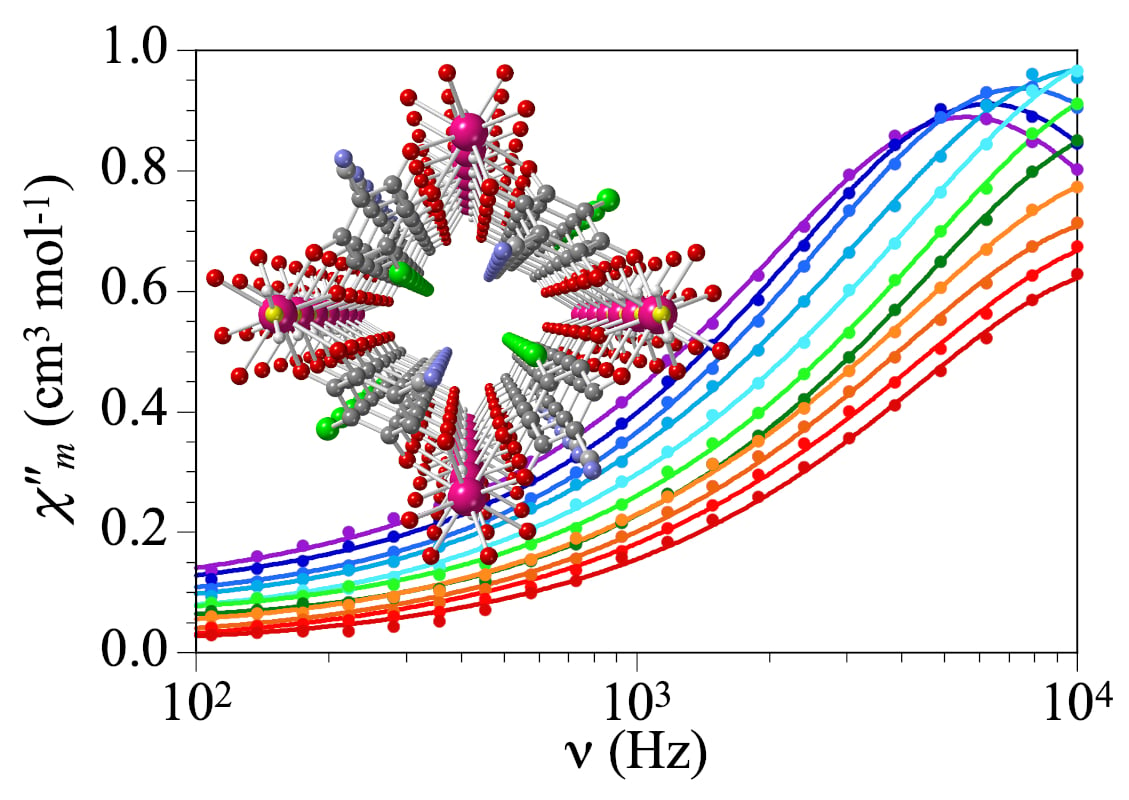This is an early access version, the complete PDF, HTML, and XML versions will be available soon.
Open AccessArticle
Departamento de Química Inorgánica, Universidad de Valencia, C/Dr. Moliner 50, 46100 Burjasot, Valencia, Spain
*
Authors to whom correspondence should be addressed.
†
This article is dedicated to the long and outstanding scientific careers of Miguel Julve and Paco Lloret, two pioneers in the fields of magnetochemistry and molecular magnetism. Sadly, Miguel left us on 9 July 2024. We have not only lost a brilliant chemist and colleague, whose desk door was also open to anyone needing help, an outstanding teacher, highly esteemed by his students, but, even more, a close friend with a fine sense of humour, a fast mind and a generosity that we will never forget.
Magnetochemistry 2025, 11(1), 1; https://doi.org/10.3390/magnetochemistry11010001 (registering DOI)
Submission received: 13 November 2024
/
Revised: 13 December 2024
/
Accepted: 20 December 2024
/
Published: 26 December 2024
Abstract
Herein, we present the synthesis and structural characterisation of two layered MOFs with the asymmetric ligand 3-chloro,6-cyano-2,5-dihydroxy-1,4-benzoquinone dianion (C6O4(CN)Cl2− = chlorocyananilato). These compounds, formulated as (H3O)[Eu(C6O4(CN)Cl)2(H2O)]·34H2O (1) and (H3O)[Dy(C6O4(CN)Cl)2(H2O)]·44H2O (2), are isostructural and show a (4,4)-layered square structure with the crystallisation water molecules located between the layers. The lanthanoid ions are surrounded by four bis-bidentate chlorocyananilato ligands that connect each LnIII centre with other four, giving rise to square cavities formed by LnIII centres in the vertices and chlorocyananilato ligands as the sides. There is an additional coordinated water molecule that occupies the caped position of the capped square antiprismatic coordination geometry around the LnIII centres. The magnetic properties show the presence of a field-induced slow relaxation of the magnetisation in the DyIII derivative at low temperatures that follows Direct and Orbach relaxation mechanisms with an energy barrier of 36(3) K.
Share and Cite
MDPI and ACS Style
Benmansour, S.; Cerezo-Navarrete, C.; Gómez-García, C.J.
Slow Relaxation of the Magnetisation in a Two-Dimensional Metal–Organic Framework with a Layered Square Lattice. Magnetochemistry 2025, 11, 1.
https://doi.org/10.3390/magnetochemistry11010001
Benmansour S, Cerezo-Navarrete C, Gómez-García CJ.
Slow Relaxation of the Magnetisation in a Two-Dimensional Metal–Organic Framework with a Layered Square Lattice. Magnetochemistry. 2025; 11(1):1.
https://doi.org/10.3390/magnetochemistry11010001
Chicago/Turabian Style
Benmansour, Samia, Christian Cerezo-Navarrete, and Carlos J. Gómez-García.
2025. “Slow Relaxation of the Magnetisation in a Two-Dimensional Metal–Organic Framework with a Layered Square Lattice” Magnetochemistry 11, no. 1: 1.
https://doi.org/10.3390/magnetochemistry11010001
APA Style
Benmansour, S., Cerezo-Navarrete, C., & Gómez-García, C. J.
(2025). Slow Relaxation of the Magnetisation in a Two-Dimensional Metal–Organic Framework with a Layered Square Lattice. Magnetochemistry, 11(1), 1.
https://doi.org/10.3390/magnetochemistry11010001
Article Metrics
Article metric data becomes available approximately 24 hours after publication online.
Source link
Samia Benmansour www.mdpi.com


